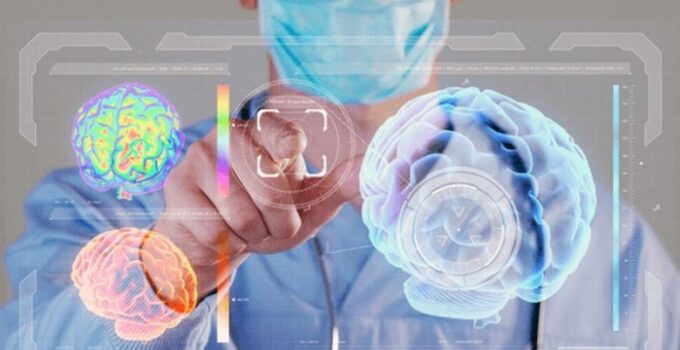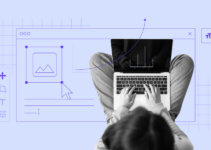3D printing in healthcare refers to the utilization of printing technology in the medical field to manufacturing a variety of medically functional devices. These printing gadgets help in disease diagnoses, treatment, transplantation, etc. A patient-match device is one of the best examples. Some of the devices include Architectural scale modeling, Prosthetics, and Prototyping. These applications are commonly found in medicine. The devices used in medicine are designed so, to create even complex formations using minute raw material than previous methodologies used in healthcare.
How does a 3d printer work?
Many people are wondering how do these printers work? This printing is a technique in which three-dimensional objects are created. These objects are formed due to design files installed in the software operating 3D printers because there are special printer files known as CAD files. The object is printed in the form of layers. It gently fuses and forms a magnificent object after solidification. All the 3D printers are created on the same basic working principle but each works according to their proprietary method.
Immense acceptance of 3D printing in Healthcare

Img source: zawya.com
The first medicinal use of these printers was made for a dental implant in the 1990s. Later on, the technique got fame in the manufacture of 3D organs. Now hospitals are warmly adopting this new technology in the healthcare department. Many hospitals have replaced the older technique of medical imaging with advanced patient-specific surgical devices. This shift is observed across the world’s hospitals, desegregating the practice of 3D printing in healthcare units. In War-torn countries, where the supply of medical instruments is complicated, 3D printers can play their role. As Aldi 3D printer or any other could be sent there, which will ultimately create several medicinal pieces of equipment even in far off villages.
Scope of 3D printing in Healthcare
According to dibbsto.co.uk the advancement of technology directly influences the treatment pathways, operation consequences. In The medical industry, lifesaving is highly aided by innovative technologies. Printing has made it possible for the physicians’ to carry on complex operations, in less time, with improves results. Medicinally, this technique is being used in the more and more advanced way by the hands of doctors, than was expected. Many lives have been saved by 3 printed organs implantation in a patient’s body, successfully. It is also a blessing for those who lost their limbs in an unfortunate incident or via chronic body infection. 3D pen devices have been used appreciably in orthopedic surgery. The radical change brought about by printing is not hidden at all. The medicine field is also highly influenced by this advancement. 3D technology is benefiting in enormous ways to save lives as much as possible and to expel expensive treatment out, so the healthcare facilities would be equally obtainable for all.
Some of the merits of 3D printing technology in healthcare are:
Cell printing, creating 3D printed living cells

Img source: arabianbusiness.com
‘In-air microfluidics ‘technique”, have made it possible to get 3D prints of living cells. Some 3D printing techniques using heat or ultraviolet radiations damage the living tissue. So alternate techniques were introduced to repair these damaged cells and tissues to their normal form. Science has made it possible to repair damaged body tissues in no time. Microfluidics is an open example of living cell printing through the application of tiny fluid droplet, having a size in micro, can be replicated. It is an approach towards healthy tissue by culturing living cell through 3d tissue engineering.
Prosthesis, a 3D printing technique!
As the list of applications continues to grow, prosthetics have been evolved on account of 3D printing. The increasing number of 3D devices have made complex prosthetics accessible. Increased availability allows patients to come and receive service of their choice, which would appear more benefiting towards them. 3D printing is further making more prosthetic devices to make it common in the majority of hospitals for making prosthetics an inexpensive treatment for the patients. This act is especially of great importance in War-torn countries, where prosthetics is immensely needed. Low-cost prosthetics will bring hope among poor patients.
3D printed Bones, just real

Img source: ucsf.edu
Among numerous merits of techniques in medicine include comfortable bones formation. 3D printers allow you to 3D print with different materials. It is possible to 3D print soft touch where the patient’s bone touches the prosthetic. This increases patient comfort and reduces the impact and risk of injury. Some 3D printers have a large baseplate volume that allows large bones to be 3D printed with Excellency. This allows doctors to create solid models that they can touch and practice and better understand the operation.
Customized treatments
Artificial inputs are very expensive to make because they have to be individualized. 3D printers give users the freedom to choose, e.g. different designs, shapes, sizes, and colors of their synthetic products. Each 3D printed piece is personalized. 3D printers use synthetic products to become more widely available at a lower cost.
Can 3D printed medicinal equipment be sterilized?
Pharmaceutical 3D printers allow high-temperature material to be sterilized. Polypropylene is a great material for medical applications because it offers high levels of heat and is resistant to chemicals.
3D printing role in healthcare training

Img source: thedoctorweighsin.com
3D printing is being used in training upcoming doctors and for demonstration the whole procedure of several complex operations before actual practice. This enhances their knowledge as well as their skill in surgery. This is because 3D prints of body parts completely demonstrated every aspect to know about. But if 2D imaging is concerned it is efficient to give an idea about the location, size, and visualization. Despite this, it is not as informative as 3D printing is. 3D prints of human parts are exact copies of actual human anatomy, so they exhibit more precisely and give more accuracy to the skills of a doctor while operational processing. Plays an important role in training future doctors and preparing for actual operations. Training of future doctors on human organs will give them more skill than practicing animal organs whose internal structure do not even match human anatomy.
Online 3D Printing Services in Healthcare
Online 3D printing services are significantly transforming healthcare by offering remote access to printing technology. These services enable hospitals and clinics, especially in remote or under-resourced areas, to obtain custom medical devices and tools without needing their own 3D printers. Healthcare professionals can upload designs to an online platform and receive the printed object via shipping. This approach not only saves time and costs but also facilitates rapid prototyping and customization of medical tools and devices. Online services are ideal for producing patient-specific models, surgical guides, and prosthetics, enhancing patient care and surgical outcomes. The flexibility and accessibility of these services make them a vital component in the expanding field of 3D printing in healthcare.
Long waits are over now!
It allows medical and lab equipment to 3D print. It is possible to 3D print, plastic parts of the goods. This reduces costs and time to wait for receiving a new medical device from external suppliers. In addition, the manufacturing and applications are faster to make this equipment readily available for average or difficult to access areas to get 3D printed medical devices more easily.
This technology is about to bring revolutionary enhancement in medicinal equipment and patient. The scope of this is very clear in the field of healthcare. It is certain that it is going to become an essential artificial process of healthcare.




